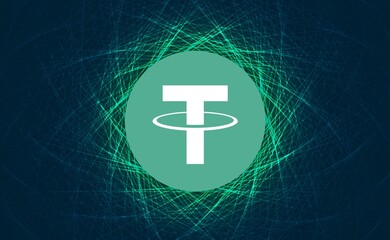In a notable achievement within the cryptocurrency domain, Tether’s USDT stablecoin has surpassed a groundbreaking market capitalization of $100 billion. This milestone represents a significant year-to-date growth of 9%, solidifying USDT’s dominance over its closest competitor, the USD Coin (USDC), which also trades at the stable value of $1.00. Such a development underscores the growing investor confidence and adoption of stablecoins in the digital currency ecosystem.
Market Capitalization Milestone
On March 4, USDT briefly achieved the remarkable $100 billion market cap landmark, a fluctuating value influenced by its current price and the quantity of tokens in circulation, as per CoinGecko’s data. This puts Tether significantly ahead, by over $71 billion, in market cap when compared to USDC, its nearest stablecoin competitor issued by Circle. Despite this, some data sources, including CoinMarketCap, have yet to reflect USDT crossing the $100 billion threshold.
Comparative Analysis with Global Giants
Tether’s market valuation now aligns it with the likes of the British multinational oil and gas company BP, and it even surpasses the market cap of the e-commerce powerhouse Shopify. This comparison illustrates the significant economic scale that Tether has achieved within the global financial landscape.
Tether’s Role and Expansion
Tether operates as a digital currency tethered to the United States dollar, offering a stable asset for crypto traders across 14 different blockchains and protocols. Standing as the third-largest cryptocurrency by market cap, trailing only behind Ether (ETH), Tether plays a pivotal role in providing a blockchain-based stablecoin solution. The broader crypto market has recently experienced a resurgence, surpassing a $2 trillion market cap, with Bitcoin (BTC) achieving a 50% price surge and reaching two-year highs.
Financial Performance and Backing
The entity behind USDT, also named Tether, backs each token with its reserves, predominantly consisting of yield-generating U.S. Treasury Bills (T-Bills). In the fourth quarter of 2023, Tether reported a record profit of $2.85 billion, with $1 billion attributed to its T-Bills investments. The company has positioned itself as a major purchaser of U.S. government debt, holding over $80 billion in T-Bills.
Asset Backing Concerns and Measures
The composition of Tether’s reserves has sparked debates within the cryptocurrency community regarding the quality of assets backing USDT. In response, Tether has taken steps to diminish its reliance on assets perceived as higher risk. Despite plans announced in late 2022 to cease lending from its reserves by the end of 2023, Tether reported $4.8 billion in loans at year-end, albeit a reduction from the beginning of the year. Tether asserts that these loans are fully collateralized and has committed to reducing them to zero in 2024.
Distribution and Controversies
A significant portion of USDT issued is on the Tron blockchain, which, according to a January report by the United Nations, has become favored among cyber fraudsters and money launderers in Southeast Asia. Tether has contested these claims, highlighting its cooperation with law enforcement and the traceability of its token.
Enhancing Readability with Tables and Bullet Points
To further enhance the readability of Tether’s achievements and challenges, we can summarize key points in the following formats:
Tether’s USDT Key Achievements:
- Market Capitalization: Surpassed $100 billion, a 9% increase year-to-date.
- Comparative Scale: Comparable to major global companies like BP and Shopify.
- Cryptocurrency Ranking: Third-largest by market cap, following Ether.
- Financial Performance: Recorded a $2.85 billion profit in Q4 2023, with significant investments in U.S. T-Bills.
Challenges and Responses:
- Reserve Quality Concerns: Steps taken to reduce exposure to higher-risk assets.
- Loan Reduction Commitment: Pledged to decrease loans from reserves to zero by 2024.
- Regulatory Scrutiny: Addressed concerns regarding the use of USDT for illicit activities, emphasizing collaboration with law enforcement.
This comprehensive overview of Tether’s USDT stablecoin, its financial growth, strategic positioning within the cryptocurrency market, and response to regulatory and operational challenges, underscores its significant role in shaping the future of digital currency. As Tether continues to navigate the complex landscape of global finance and regulation, its developments are keenly watched by investors, regulators, and the wider cryptocurrency community.










